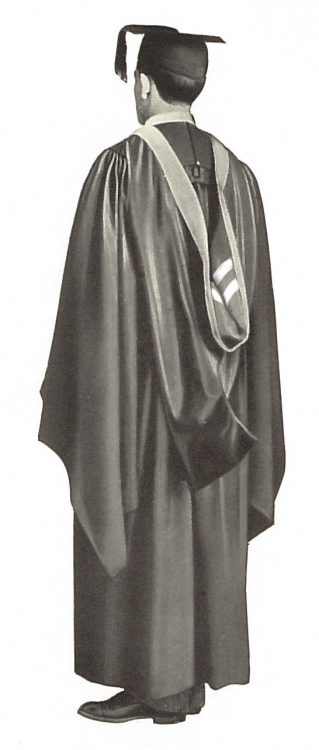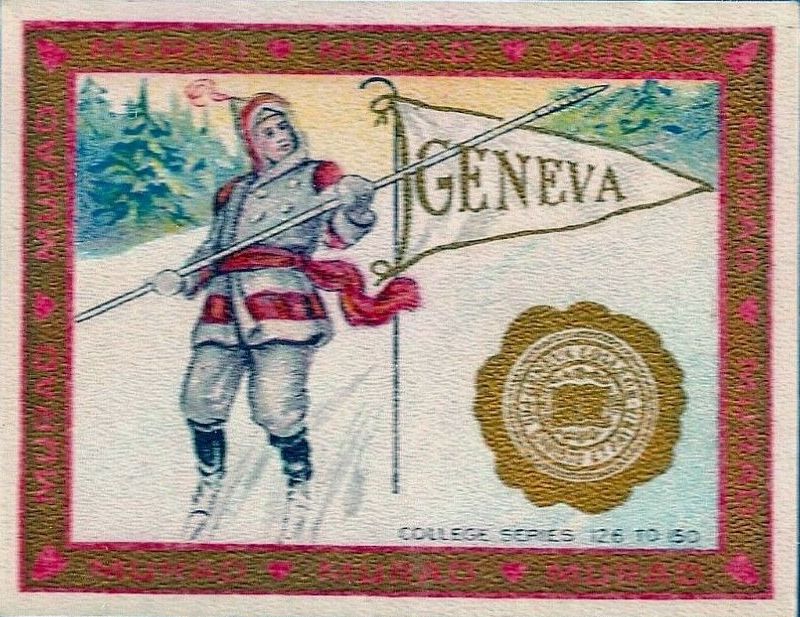Geneva College
Pennsylvania
1848




Students at Geneva College adopted old gold and white as their school colors in April 1890. Old gold symbolized permanence and white symbolized purity.
Citations in the World Almanac (listed by cover date; color information is from the previous year): orange/white (1895); white/gold (1896-1901); yellow/white (1902-1904); old gold/white (1923-1935)


Geneva College appeared in a supplemental list of school colors the Intercollegiate Commission on Academic Costume appended to the draft of the 1895 Intercollegiate Code of Academic Costume the commissioners sent to the 1896 edition of the Living Church Quarterly (published December 1895). The college was cited as having school colors of orange and white, but how these colors were arranged in the lining of the academic hood was not described. These colors appear to have been taken from information in the 1894 edition of the World Almanac.
The commissioners gave the Intercollegiate Bureau of Academic Costume (IBAC) authority to assign unique hood lining patterns to every college and university that adopted the 1895 Code. At an unknown date, the Bureau assigned Geneva College a hood lined old gold with a white chevron, according to hood lining pattern lists published by the IBAC in 1927, 1948, and 1972. In Academic Heraldry in America (1962) and Academic Dress and Insignia of the World (1970), Kevin Sheard described Geneva’s hood lining the same way.
Unfortunately, the Bureau mistakenly assigned the college a hood lining pattern that was identical to the hood lining it had already assigned to Georgia Institute of Technology no later than 1918. To resolve this problem, here Geneva College has been reassigned a hood lined old gold with two white chevrons, a heraldic pattern the Intercollegiate Bureau of Academic Costume began using as early as 1895 to avoid duplications of this sort – though apparently not in this instance.